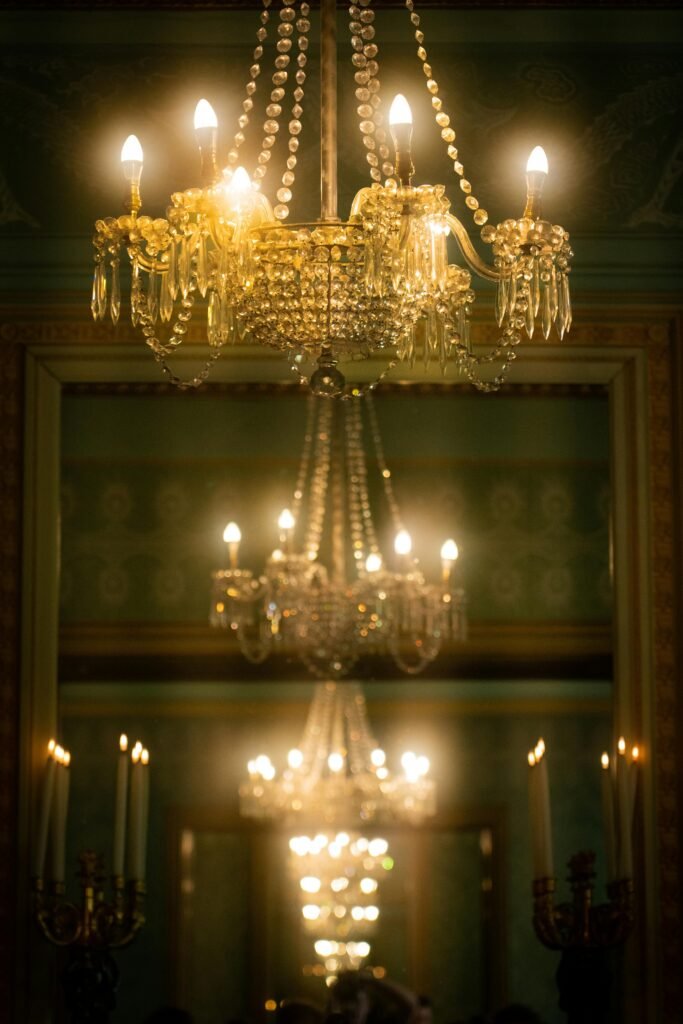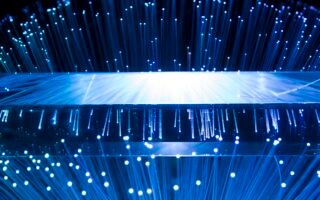Imagine a future where every corner is lit up with energy-efficient and eco-friendly LED lights. From homes to offices, streets to stadiums, LED lighting is revolutionizing the way we illuminate our world. With advancements in technology and creative innovations, LED lighting is not only providing brighter and clearer lighting options but also becoming more versatile and customizable. From smart lighting systems that can be controlled with a tap on your smartphone to LED panels that can mimic natural sunlight, the future of LED lighting is bright and promising. In this article, we will explore the latest innovations and advancements in LED lighting that are shaping the way we illuminate our lives. So get ready to step into a world of endless possibilities with LED lighting.

This image is property of images.pexels.com.
1. Increased Energy Efficiency
LED lighting technology has revolutionized the way we illuminate our homes and businesses. One of the key advantages of LED lighting is its increased energy efficiency, which has significant implications for both cost savings and environmental sustainability.
Advancements in LED technology
LEDs, or light-emitting diodes, have seen remarkable advancements in recent years. These advancements have resulted in highly efficient LED bulbs that consume far less energy than traditional incandescent or fluorescent bulbs. LED technology has improved to the point where LED bulbs can now produce the same amount of light as their conventional counterparts while using only a fraction of the energy.
Improved efficiency through better thermal management
One of the critical factors in achieving higher energy efficiency in LED lighting is effective thermal management. LEDs generate less heat than other lighting technologies, but heat still needs to be dissipated to ensure optimal performance and longevity. Recent advancements in thermal management techniques, such as heat sinks and improved heat dissipation materials, have contributed to even greater energy efficiency in LED lighting systems.
Smart lighting controls for energy optimization
The integration of smart lighting controls has further enhanced the energy efficiency of LED lighting. With the advent of Internet of Things (IoT) technology, LED lighting systems can now be wirelessly controlled and automated. These smart controls allow for precise dimming, scheduling, and occupancy sensing, ensuring that lighting is only used when and where it is needed. By optimizing energy usage, smart lighting controls contribute to energy savings and lower electricity bills.
2. Enhanced Lifespan
LED lighting also boasts a significantly longer lifespan compared to traditional lighting options like incandescent or fluorescent bulbs. This extended lifespan brings several advantages, including reduced maintenance and replacement costs and positive implications for sustainability and waste reduction.
Longer lifespan of LED bulbs
LED bulbs have an impressive average lifespan of up to 50,000 hours, which is around 50 times longer than traditional incandescent bulbs. This means that LED bulbs require much less frequent replacement, resulting in reduced maintenance costs, especially in large-scale applications such as commercial buildings or outdoor lighting installations.
Reduced maintenance and replacement costs
The prolonged lifespan of LED bulbs translates into substantial cost savings over time. With fewer bulb replacements needed, businesses and homeowners can save on maintenance expenses, including the cost of purchasing replacements and the labor involved in changing bulbs frequently.
Implications for sustainability and waste reduction
The longer lifespan of LED bulbs also has significant implications for sustainability and waste reduction. By reducing the number of bulbs discarded, LED lighting minimizes the environmental impact associated with manufacturing, transportation, and disposal of traditional lighting products. This contributes to a more sustainable future by reducing waste sent to landfills and conserving natural resources.

This image is property of images.pexels.com.
3. Improved Color Rendering
Another area where LED lighting has made remarkable strides is in color rendering. Color rendering is the ability of a light source to accurately represent colors, and advancements in LED technology have led to improved color quality and high color rendering index (CRI).
Advancements in LED color quality
Early LED lighting products were criticized for lacking in color quality and producing light that was perceived as cold or unnatural. However, significant advancements in LED technology have addressed these concerns. Modern LED bulbs now offer a wide range of color options, including warm whites, cool whites, and even colored lighting, with improved color consistency and accuracy.
High color rendering index (CRI) for more accurate color representation
The color rendering index (CRI) is a measurement that quantifies how well a light source accurately represents colors compared to a reference light source. LED lighting has made substantial progress in achieving high CRIs, which means that LED bulbs can now render colors more accurately and true to life. This advancement has implications for various applications, such as art galleries, retail environments, and photography, where accurate color representation is crucial.
Applications for art, retail, and photography
LED lighting’s improved color rendering capabilities have unlocked new possibilities in art, retail, and photography. Museums and art galleries can now use LED lighting to showcase artwork with precise and vibrant colors, ensuring an enhanced viewing experience for visitors. In retail environments, LED lighting with high CRI can accurately represent merchandise, helping customers see products in their true colors. Photographers can also benefit from LED lighting, as it provides better color accuracy for capturing images and videos.
4. Integration with Internet of Things (IoT)
The Internet of Things (IoT) has revolutionized the way we interact with technology, and LED lighting has not been left behind. Integration with IoT has opened up a world of possibilities for LED lighting systems, including smart controls, wireless connectivity, and integration with other IoT devices and systems.
Smart LED lighting systems
By integrating LED lighting with IoT technology, smart LED lighting systems are born. These systems allow for wireless control and automation of lighting, offering numerous benefits. With smart LED lighting, users can control their lighting from anywhere using their smartphones or other internet-connected devices. This level of control enables the creation of personalized lighting schedules, automatic adjustments based on daylight or occupancy, and even voice-controlled lighting through virtual assistants.
Wireless connectivity and remote control
IoT integration allows LED lighting systems to connect wirelessly to various devices and platforms. This wireless connectivity enables convenient remote control, eliminating the need for physical switches or keypads. Users can easily adjust lighting levels, color temperature, and even access advanced lighting features through dedicated smartphone apps or other custom interfaces.
Integration with other IoT devices and systems
LED lighting’s integration with IoT extends beyond standalone lighting control. It can seamlessly integrate with other IoT devices and systems, creating a connected ecosystem within homes, businesses, or even entire cities. For example, LED lighting systems can work in harmony with sensors for automated lighting based on occupancy, motion, or even environmental conditions. This integration promotes energy efficiency, convenience, and enhanced overall functionality within smart homes, buildings, and infrastructure.

This image is property of images.pexels.com.
5. Human Centric Lighting
Human centric lighting is an emerging field that focuses on the impact of lighting on human well-being, productivity, and overall health. LED technology plays a crucial role in enabling human-centric lighting solutions that can positively affect mood, sleep patterns, and even our cognitive performance.
Tunable white LED technology
Tunable white LED technology allows for the dynamic adjustment of color temperature and intensity to mimic natural daylight patterns. Natural daylight is known to influence our circadian rhythms, and tunable white LED lighting can provide similar effects indoors. By replicating the characteristics of natural daylight, LED lighting can promote better sleep, mood regulation, and enhanced alertness during the day.
Promoting better human well-being and productivity
Human-centric lighting aims to create lighting environments that support human well-being and productivity. By aligning LED lighting with our natural circadian rhythm, we can experience improved sleep quality, greater alertness, and increased productivity. Human-centric lighting can be particularly beneficial in places where people spend a significant amount of time, such as healthcare facilities and office environments.
Applications in healthcare and office environments
The adoption of human-centric LED lighting in healthcare facilities can have a positive impact on patients’ recovery and well-being, as well as the working environment for healthcare professionals. In office environments, LED lighting can be optimized to promote focus and concentration or create a more relaxed atmosphere, depending on the task at hand. The ability to tailor LED light according to specific activities and desired mood can contribute to increased productivity and overall satisfaction in the workplace.
6. Miniaturization and Flexible Form Factors
LED lighting’s miniaturization and flexible form factors open up new design possibilities and enable lighting installations on unconventional surfaces, including curved or irregular shapes. This versatility makes LED technology more adaptable to various architectural or design requirements.
Smaller LED components and modules
Advancements in LED technology have resulted in increasingly smaller LED components and modules without compromising brightness or efficiency. These miniaturized LED components allow for more discreet lighting fixtures and enable designers to incorporate lighting elements into intricate designs without dominating the aesthetics. Whether it’s embedding LEDs in furniture, architectural features, or even clothing, the smaller size of LED components provides more flexibility in design and application.
Flexible LED strips and panels
Flexible LED strips and panels offer a whole new dimension of creative possibilities. Unlike traditional lighting fixtures, which are rigid, these flexible LED products can be bent, twisted, or wrapped around curved surfaces or irregular shapes. This flexibility allows for dynamic lighting effects, such as highlighting contours or creating seamless lighting installations in unconventional spaces. Whether it’s accentuating interior architectural features, creating mood lighting in hospitality settings, or adding an artistic touch, flexible LED strips and panels offer endless design opportunities.
Design possibilities for curved or irregular surfaces
Conventional lighting solutions often struggle to adapt to curved or irregular surfaces. However, LED technology’s flexibility allows for lighting installations that seamlessly follow the contours of architectural structures, furniture, or even vehicles. From curved walls to bespoke lighting sculptures, LED lighting can transform these surfaces into stunning visual elements. This ability to integrate lighting into unconventional shapes and surfaces enhances both aesthetics and functionality, resulting in truly unique and captivating lighting designs.
7. Smart Lighting Systems
The integration of LED lighting with intelligent building management systems and sensor-based control has ushered in the era of smart lighting systems. These systems provide numerous benefits, including energy savings, personalized lighting experiences, and increased automation.
Integration with intelligent building management systems
Intelligent building management systems (BMS) consist of a network of devices and sensors that monitor and control various building systems. By integrating LED lighting systems with BMS, lighting can be seamlessly integrated into a larger control infrastructure, enabling advanced automation and energy optimization. For example, lighting can be coordinated with heating, ventilation, and air conditioning (HVAC) systems, occupancy sensors, or security systems to achieve energy savings and optimal environmental conditions.
Sensor-based lighting control for energy savings
Sensor-based lighting control is a key feature of smart lighting systems. Occupancy sensors, daylight sensors, and motion sensors can detect activity, natural light levels, or movement within a space, allowing the lighting system to adjust accordingly. By using sensors to provide lighting only when and where it is needed, energy waste can be minimized, resulting in significant energy savings. Sensor-based lighting control is particularly effective in areas with varying usage patterns, such as corridors, parking lots, or warehouses.
Personalized lighting experiences through automation
Smart lighting systems offer personalized lighting experiences through automation. Custom lighting scenes can be created to match specific activities or moods, such as reading, relaxing, or entertaining. With the touch of a button or through voice commands, users can effortlessly transform the ambiance of a space. These personalized lighting experiences not only enhance user comfort and convenience but can also provide additional energy savings by automatically adjusting lighting levels and color temperature based on pre-set preferences.
8. Advancements in Light Quality
LED technology’s continuous advancements have led to significant improvements in light quality. These advancements include an expanded color temperature range, better light uniformity and distribution, and reduced flickering and glare.
Improved color temperature range
LED lighting offers a diverse range of color temperature options. From warm, yellowish tones resembling incandescent bulbs to cool, bluish-white tones resembling daylight, LED bulbs can adapt to various environments and atmospheres. The expanded color temperature range allows for greater control and customization of lighting to suit different needs, from creating cozy and inviting spaces to providing bright and stimulating illumination for task-focused areas.
Better light uniformity and distribution
Even light distribution is an essential aspect of comfortable and effective lighting. LED lighting excels in providing uniform and consistent illumination, without the unevenness often associated with traditional lighting sources. This uniform light distribution ensures that every corner of a space is adequately illuminated, eliminating dark spots or harsh contrasts. Whether it’s a residential living room, a retail store, or an outdoor parking lot, LED lighting’s superior light uniformity enhances visibility and creates a more pleasant visual experience.
Reduced flickering and glare
Flickering and glare can cause discomfort and eye strain, particularly in environments where visual tasks are performed. LED technology has made significant strides in reducing flickering and glare, resulting in improved visual comfort. LED bulbs operate on direct current, which eliminates the flickering associated with traditional AC-powered lighting. Moreover, innovative design features, such as diffusers or frosted lenses, can minimize glare caused by intense light sources, making LED lighting more visually comfortable and pleasant for extended use.
9. Outdoor and Architectural Applications
LED lighting’s efficiency and versatility have made it an ideal choice for outdoor and architectural applications. Its ability to provide efficient lighting solutions for streets and public spaces, dynamic lighting for architectural highlights, and increased safety and visibility have transformed the way we illuminate our outdoor environments.
Efficient lighting solutions for streets and public spaces
LED lighting has revolutionized street lighting and public space illumination. LED street lights are highly energy-efficient and offer superior light output compared to traditional lighting technologies. They provide bright and uniform illumination, enhancing safety and visibility for pedestrians, cyclists, and motorists. LED street lights also have a longer lifespan, reducing maintenance costs and lowering the environmental impact associated with replacing traditional street lights.
Dynamic lighting for architectural highlights
Architectural lighting plays a crucial role in accentuating the unique features and character of buildings and structures. LED lighting’s versatility and controllability enable the creation of dynamic lighting designs that can transform architectural highlights into stunning visual displays. By using different color temperatures, intensity levels, or even animated patterns, LED lighting can bring buildings to life during the night and create captivating visual experiences. The ability to change lighting settings and effects on demand allows for unlimited creativity and enhances the aesthetic appeal of architectural landmarks.
Increased safety and visibility
Outdoor environments require effective lighting to ensure safety and optimal visibility. LED technology excels in delivering bright, white light that enhances visibility, reducing the risk of accidents, and improving overall safety. Whether it’s illuminating pedestrian walkways, parking lots, or outdoor recreational areas, LED lighting provides clear visibility and guidance, even in low-light conditions. The improved color rendering of LED lighting also contributes to better recognition of objects and potential hazards, further enhancing outdoor safety.
10. Cost Reduction and Affordability
As LED technology becomes more widely adopted and production scales increase, the cost of LED lighting products continues to decrease. This cost reduction, combined with economies of scale, has made LED lighting increasingly affordable for consumers and businesses alike.
Economies of scale in LED production
With the rising demand for LED lighting, manufacturers can benefit from economies of scale in production. As production volumes increase, the cost per unit decreases, making LED lighting more cost-effective in comparison to conventional lighting options. This positive feedback loop drives further adoption and encourages more widespread implementation of LED lighting solutions.
Decreasing prices of LED lighting products
The decreasing prices of LED lighting products have made them more accessible to a broader consumer base. While LED bulbs may have had a higher upfront cost in the past, the long-term cost savings resulting from lower energy consumption and decreased maintenance expenses outweigh the initial investment. Moreover, as technological advancements continue to drive efficiency, durability, and performance improvements, the price of LED lighting products is projected to decrease further, making them an even more affordable option for consumers and businesses.
Wider adoption and accessibility for consumers and businesses
The combination of lower costs and increased awareness of the benefits of LED lighting has led to wider adoption and accessibility across various sectors. From residential homes to commercial buildings and public infrastructure, LED lighting has become a go-to solution for lighting needs. Consumers and businesses alike can enjoy the numerous advantages of LED lighting, including energy savings, durability, reduced maintenance, and environmental sustainability. The affordability of LED lighting has democratized access to efficient and advanced lighting technology, unlocking new possibilities for lighting design, energy efficiency, and cost savings.
In conclusion, the future of LED lighting is filled with continued innovations and advancements that revolutionize the way we illuminate our world. From increased energy efficiency and extended lifespan to improved color rendering and integration with IoT, LED lighting is reshaping the lighting industry. With its versatility, human-centric capabilities, and cost reductions, LED lighting offers a range of benefits for various applications, from residential and commercial spaces to outdoor environments. As LED technology continues to evolve, we can expect even more exciting possibilities and opportunities for efficient, sustainable, and visually captivating lighting.



